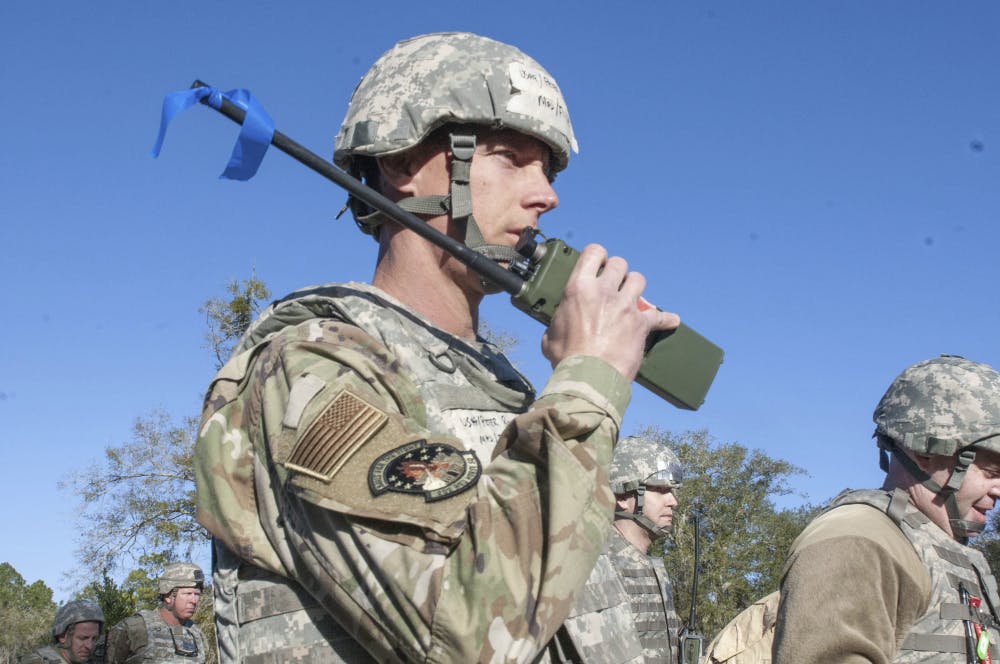Pentagon to Secure Edge Computing to Improve Mission Outcomes
Edge computing is vital to the warfighter but securing networks and enabling data access at the network edge remain difficult.

Developing capabilities at the network edge allows the Defense Department (DOD) to conduct resilient operations in remote environments — even when networks fail — while securely processing sensitive information closer to the end user and reducing operational costs.
But large volumes of data, standardization and interoperability, infrastructure limitations and security considerations still hinder data integration and effective communication at the edge.
Using capabilities at the edge used to be a local and self-contained effort involving temporary or single-purpose networks to support missions in remote environments. Now, DOD wants the warfighter to rely upon vast enterprise resources at the farthest edge of operating forces, which requires building a unified network, implementing a zero trust framework and developing new policies.
“Now, when you talk about planning missions in the field, you’re talking about bringing to bear data that is much more broad and much more diverse and much more informative to that mission. We’re not just talking about command control… we’re also talking about the weather associated with that, the geospatial information, intel reporting…” said Winston A. Beauchamp, Air Force Deputy CIO, at the Potomac Officers Club CIO Summit Tuesday. “Then just as importantly, afterwards, that brought back to the enterprise so that it can be added to the corpus of knowledge about what’s going on at that part of the field.”
Challenges associated with edge computing are multifaceted and require transformative changes and doing business differently.
“We have essentially taken about a decade-long modernization holiday in the department. So we wind up with a lot of systems that have maybe been added, components replaced, but not redesigned significantly in a couple of decades,” Beauchamp said. “I’ve been to the bases where the core infrastructure hails from the Reagan administration.”
Colonel Michael S. Medgyessy, intelligence CIO for the Air Force Intelligence Community, said services often have to grapple with IT systems unable to leverage DOD’s extensive resources at the farthest edge to improve mission outcomes. Specifically, structure, acquisition and finance don’t currently work with agile information technology.
“If you had to run your bank account with 1000 different bank accounts, and you couldn’t transfer money between the different accounts, and you had to know three years ahead of time, how much money you are to put in each bank account, and make sure it’s the right color of money…Those are all constraints put into the system by what we live inside of that we have to deal with in a very agile environment, that we’re trying to do things very quickly,” Medgyessy said.
Thomas Patrick Flanders, program executive officer for medical systems and CIO for the Defense Health Agency (DHA), said the current process of bringing cybersecurity to the edge is slow-moving and hindering DOD’s ability to operate at the edge.
“The process is just too cumbersome,” Flanders said. “New medical devices, you can think of these medical devices as edge devices. When you think of stuff like CT machines or MRI machines – there are a host of them out there, they’re specially ones just for the heart, just for the eyes, just for teeth. To accredit that stuff takes like a year, and we got to do something about it.”
Medgyessy hopes DOD will implement and make use of technology to allow warfighters to access the data they need at the speed of mission relevancy.
“So in my vision is by 2027, harnessing all these capabilities…zero trust, and the cloud, and AI, that the workforce would have the ability to self-provision a solution to a problem, harnessing the latest AI with the data they need, globally accessible in a secure manner, in less than 24 hours as a matter of routine, not waivers and exceptions. That will be the goal,” Medgyessy said.
Edge computing will play a crucial role in implementing the Joint All-Domain Command-and-Control (JADC2) concept to put actionable data in the hands of the warfighter and improve the decision-making process. Lt. Gen. Mary O’Brien, director of C4 and cyber and J6 CIO, said the JADC2 acronym will add the word “combined” going forward to reflect and emphasize efforts to work jointly with all the services and international partners to deliver the framework.
“JADC2 — we recently put ‘combined’ on the front of it, so you’ll hear a CJADC2 going forward,” O’Brien said.
This is a carousel with manually rotating slides. Use Next and Previous buttons to navigate or jump to a slide with the slide dots
-

How TMF is Helping Agencies Accelerate Tech Modernization
The program launched a new AI pilot to expedite TMF applications as agency leaders urge more to consider applying for funds.
4m read -

Sea-Air-Space: Zero Trust is ‘The Best Approach’ For Military Cybersecurity
Marines Cyber Technology Officer Shery Thomas discusses identity management across networks and devices.
10m watch -

How Agencies are Justifying Budget Growth in AI, Zero Trust
IT leaders stressed the importance of understanding user knowledge and needs when prioritizing cybersecurity projects.
3m read -

DOJ Weighs 'Bring Your Own Devices' Amid Increased Threats
The agency wants stronger industry standards around cybersecurity before considering a more tailored mobile device policy.
2m read








